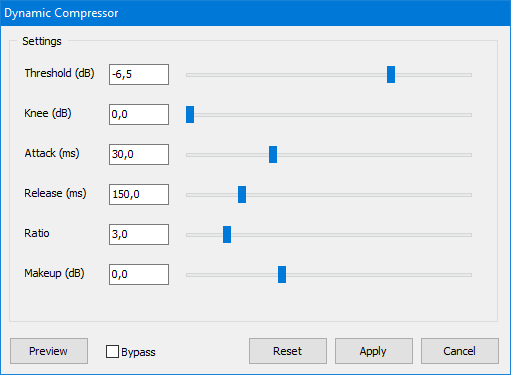
Many novice musicians and sound engineers have heard of the "compressor" and its wondrous possibilities. Let's start with the terminology, which is necessary to learn how to master such effect as a Dynamic Compressor on a decent level. It is necessary to know what each of its main parameters is responsible for, understanding its application in one or another case. We will try to explain the listed basics without going too deep into scientific terminology and technical schemes, to make it understandable even for beginners.

1 What is it for?
The compressor is designed to reduce the dynamic range of the audio signal. Do not confuse it with MP3, which is designed to reduce the size of the sound file. In other words, it reduces the difference between the loudest and quietest sounds. Using a compressor helps improve speech intelligibility when working with microphones, increase digital resolution, and therefore signal-to-noise ratios, to give "density" to voices and instruments. The result of compressor processing can be subtle to the ear. However, when handled correctly, a dull sound can be made sharper and richer, the voice can be made harsher, uncharacteristic features can be given to the performer, and cheap musical instruments can be put in a more favorable light. On the other hand, due to a lack of skill, the sound can be irreparably ruined.
There are many effects for dynamic processing, which we will consider in the following articles, but now just list them: Compressor, Limiter, Maximizer, Noise Gate, etc...
2 Main parameters
Threshold - this is a level in dB above which the compressor starts to operate. If the signal level is less than the selected Threshold, the compressor does not affect the signal. It turns out that the signal below the triggering threshold is not changed, and above the threshold is made quieter, but how quieter it is determined by the Compression Ratio parameter.
Compression Ratio - this parameter shows the compression ratio, which is determined by the ratio of the input signal level to the output signal level. At a ratio of 1:1, the signal is not processed. For example, a 2:1 ratio means that a 2dB change in the input signal level will only cause a 1dB change in the output signal level.
Attack time - this parameter indicates how quickly the compressor will respond to a signal that exceeds the trigger threshold.
Release time - time for the compressor to return from the active state to the initial state.
3 Additional parameters
Hold time - this parameter is not always present in compressors. Its main function is to keep the effect in one or another state.
Make-Up Gain - this is the parameter that adjusts the level of the output signal. Since the signal became quieter after compression, you can use this parameter to make the signal level the same as it was before compression or even louder or even quieter.
Knee - this control is responsible for the softness of the compressor response at the Threshold point. Usually, there are two adjusters - Hard and Soft, and sometimes you can choose more exactly what level you need.
LookAhead - activating this parameter creates a delay line on the input that allows the compressor to analyze the signal before starting processing. This solves the problem of selecting the correct Attack value.
Peak/RMS - this is the parameter that determines how the compressor will measure the signal level. Either with Peak values only (Peak) or with root mean square (RMS) volume.
4 Conclusion
To summarize, a compressor with properly tuned parameters will make the sound definitely better, denser, and more distinct. Unnecessary jumps will become quieter, quiet sounds will be pulled up. Once you are able to pick out the compression sounds, put your ear to the test as you tweak the ratio up and down. Continue to listen as you make adjustments on the attack and release knobs, be it faster or slower. At first, sound compression is not very easy to understand, and only time and practice will help you in mastering this sound processing tool. Always before using this tool, think about whether it is necessary at all, as it is a very delicate effect and you can easily ruin the sound with it.
